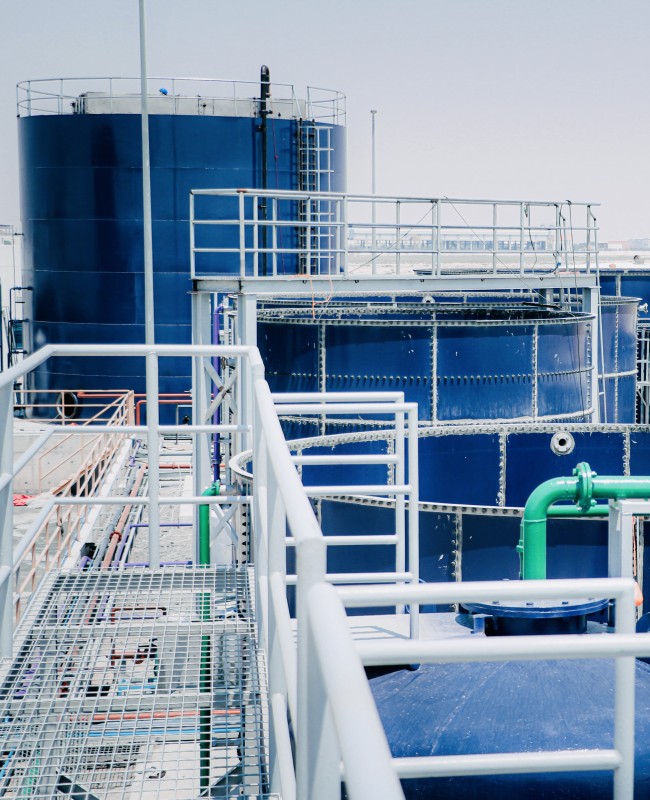
Waste water treatment
The main objectives of wastewater treatment are (i) reducing water pollution and (ii) making use of the waste resulting from treatment processes to ensure a more sustainable use of water resources.
A wastewater treatment plant (WWTP), receives and treats municipal and industrial wastewater. That is, a WWTP treats water to remove waste, grease and floating oils, sand and any coarse debris present in the water; the treatments remove organic and inorganic materials through settling processes, as well as biodegradable organic material dissolved in the water.
- Preliminary treatment: it involves the separation of large solids (bottles, fabric, plastics) found in the water using bar racks and screens.
- Primary treatment: physico-chemical treatments to sediment and precipitate suspended solids and reduce the biochemical oxygen demand of the organic solids. In addition, the treatment neutralises the water, eliminates volatile contaminants, removes greases and oils, etc.
- Secondary treatment: biological treatments that reduce the amount of organic matter in wastewater. They include aerobic processes which degrade organic material in the presence of oxygen, as well as anaerobic processes which oxidise organic matter without oxygen, followed by secondary settling.
- Tertiary treatment: advanced physical, chemical and biological processes, which eliminate heavy metals, nitrogen, phosphorous, and pathogens. In some WWTPs water undergoes further treatment to allow its reuse for purposes such as irrigation of parks and green areas, street washing, or industrial uses.


Effluent treatment
Category Info



